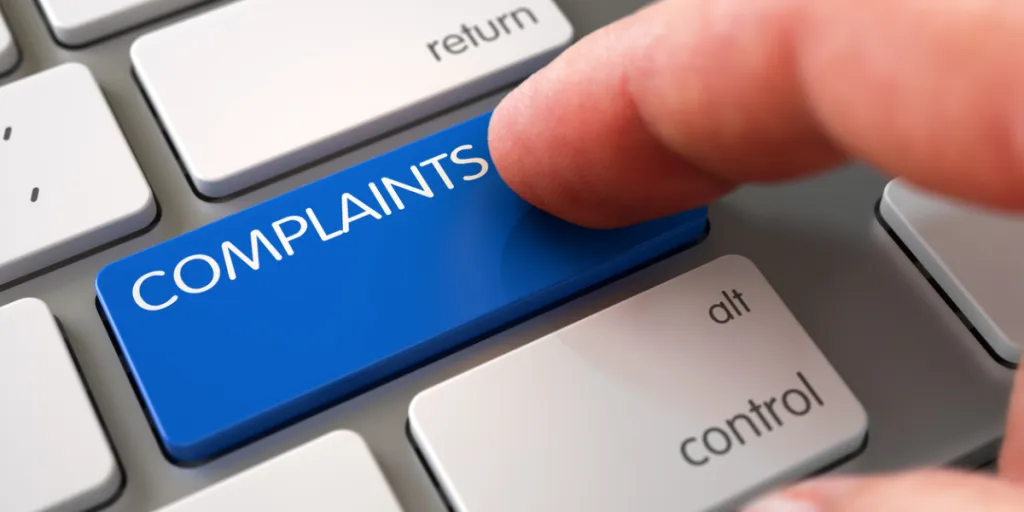While every business aims to provide a seamless shopping experience, the reality is that customer complaints are inevitable. The true test of a successful e-commerce venture lies not only in the products it offers but also in how effectively it handles customer complaints and resolves issues.
Here, we will discuss the strategies and best practices that can help e-commerce businesses turn customer complaints into opportunities for growth.
Table of Contents
The importance of effectively handling complaints
How to prepare to receive complaints
7 steps for handling customer complaints
Turn complaints into opportunities for improvement
Final thoughts
The importance of effectively handling complaints

Before we dive into the strategies, let’s understand why handling customer complaints is crucial for the success and sustainability of an e-commerce business.
Every customer complaint is an opportunity to:
- Build trust: Resolving complaints in a timely and satisfactory manner helps build trust with your customers. Trust is the foundation of long-term customer relationships.
- Improve products and services: Customer feedback, especially complaints, provides valuable insights into areas needing improvement. Use this information to refine your products and services.
- Enhance reputation: A business that handles complaints well will likely receive positive reviews and recommendations. On the other hand, mishandling complaints can tarnish your reputation.
- Retain customers: Customers who see their complaints addressed are more likely to return for future purchases.
How to prepare to receive complaints
Since we know customer complaints and other issues will arise, it’s essential to prepare our businesses and our teams to receive these complaints so they can be handled with care.
1. Establish a customer-centric culture
Creating a culture that prioritizes customer satisfaction is the first step in effective complaint handling. Every team member, from customer service representatives to top-level executives, should be aligned to ensure a positive customer experience.
2. Streamline communication channels
Accessible and efficient communication channels are critical for customers to voice their concerns and for businesses to respond promptly.
Here are some key considerations:
- Multichannel support: Offer customer support through various channels, including email, live chat, phone, and social media; this ensures that customers can choose the method most convenient for them.
- Clear contact information: Make sure that your website prominently displays contact information. This includes a dedicated customer support email, a customer service phone number, and links to your social media profiles where customers can reach out.
- Chatbots and automated responses: Implementing chatbots and automated responses can help acknowledge customer complaints quickly, providing an initial response even outside regular business hours.
3. Empower your customer service team
Your customer service team is on the front lines of handling complaints, and empowering them is crucial for success. Here’s how you can support and enable your customer service representatives:
- Continuous training: Provide ongoing training to keep your customer service team updated on new products, policies, and industry trends.
- Decision-making authority: Empower your customer service representatives to make decisions that benefit the customer within predefined limits; this reduces the need for time-consuming escalations and streamlines the resolution process.
- Emphasize emotional intelligence: Dealing with upset customers requires emotional intelligence. Train your team to empathize with customers, listen actively, and respond calmly and professionally.
- Implement a knowledge base: Create a comprehensive knowledge base that your customer service team can refer to for common issues and solutions. This resource can help them provide quick and accurate assistance.
4. Leverage technology for efficiency
Technology plays a vital role in optimizing complaint-handling processes. Here are some ways you can leverage technology for efficient resolution:
- Customer relationship management (CRM) systems: Implement a CRM system to centralize customer information; this allows your team to access relevant customer data quickly, facilitating a more personalized and efficient resolution process.
- Ticketing systems: Utilize ticketing systems to track and prioritize customer complaints; this ensures that no complaint falls through the cracks and that each one is addressed promptly.
- Automation for routine tasks: Automate repetitive tasks like order tracking or refund processing to free up your team’s time for more complex and personalized customer interactions.
- Data analytics: Use data analytics to identify patterns in customer complaints; this can help you proactively address underlying issues, such as product defects or shipping problems.
5. Implement a proactive approach to customer satisfaction
Beyond simply resolving complaints, a proactive approach to customer satisfaction involves identifying potential issues before they escalate. Here are some strategies to implement a proactive approach:
- Surveys and feedback forms: Regularly solicit customer feedback through surveys and feedback forms to identify areas for improvement.
- Monitor social media: Keep a close eye on social media platforms for mentions of your brand. Respond promptly to positive and negative comments, and use social listening tools to identify potential issues.
- Product quality control: Implement stringent quality control measures to minimize the likelihood of product defects. Regularly assess the quality of your products and address any issues proactively.
- Clear policies and communication: Clearly communicate your shipping, returns, and product warranty policies. Transparent communication can prevent misunderstandings and reduce the likelihood of complaints.
7 steps for handling customer complaints

An effective complaint resolution process ensures consistency and fairness in handling customer issues.
This process should include the following steps:
- Listen first: Before you try to solve a problem, always take the time to listen. If you establish a knowledge base where customers can get answers to their questions and they’re still reaching out, their problem or situation may be unique.
- Acknowledge and apologize: A prompt acknowledgment lets customers know their concerns are being taken seriously. Include a genuine apology to show empathy. Even if you don’t think you or the company have done something wrong, apologizing can help defuse the situation.
- Gather information: Collect all relevant information about the complaint and ask questions to ensure you see the whole picture. This may include order numbers, product details, and a detailed description of the issue.
- Investigate thoroughly and loop in the necessary parties: Once you have the information, conduct a thorough investigation into the complaint. This may involve checking inventory records, consulting with relevant departments, or examining communication logs. Keeping other teams in the loop can help you come to a faster resolution and help ensure similar issues don’t continue to occur.
- Communicate transparently: Keep the customer informed about the progress of the investigation and when they are likely to expect a resolution. Transparency is key to maintaining trust. If there are delays, communicate the reasons and set realistic expectations for resolution.
- Provide solutions: Offer viable solutions to the customer’s problem. This may involve issuing a refund, sending a replacement product, or discounting future purchases. Tailor the solution to the specific circumstances of the complaint.
- Follow-up: After the resolution, follow up with the customer to ensure they are satisfied with the outcome. This step demonstrates a commitment to customer satisfaction and provides an opportunity to gather feedback on the resolution process.
Additionally, ensure that accurate records of customer interactions are kept. These records can help if future issues arise with the same customer, and the data obtained from these interactions can be used to make business improvements.
Turn complaints into opportunities for improvement
When viewed from the right perspective, customer complaints can be valuable sources of information for improving your business.
Here’s how you can turn complaints into opportunities for growth:
- Root cause analysis: Conduct a thorough root cause analysis to identify the underlying issues when resolving complaints. Addressing these root causes can prevent similar complaints in the future.
- Incorporate feedback into product development: Use customer feedback, especially complaints related to product features or quality, to inform your product development process. Continuous improvement based on customer input is a powerful strategy.
- Enhance customer education: If complaints stem from misunderstandings or miscommunications, consider improving customer education. Provide clear product descriptions, instructions, and FAQs to preemptively address common concerns.
- Reward customer loyalty: Turn a dissatisfied customer into a loyal customer by offering incentives such as discounts, exclusive offers, or loyalty program memberships. This not only resolves the immediate issue but also encourages repeat business.
Final thoughts
Effectively handling customer complaints is a skill that can set successful e-commerce businesses apart from their competitors. Remember, every complaint is a chance to showcase your commitment to customer satisfaction and turn a dissatisfied customer into a loyal advocate for your brand.








